Building a Progressive Pre-Race Training Plan
Avoiding Burnout: Building a Progressive Pre-Race Training Plan
Racing pigeons are elite athletes. Just like human runners wouldn’t leap into a marathon after a winter break, pigeons must be reconditioned gradually to reach peak performance safely. Unfortunately, a common mistake among fanciers is the abrupt shift from rest to intense training tosses of 40–60 kilometers. This sudden workload not only risks poor performance but can also lead to crashes, exhaustion, or injury.
In this blog post, we’ll walk you through how to structure a proper, progressive pre-race training plan for your racing pigeons. You’ll learn how to rebuild stamina, wing strength, and respiratory health methodically, all while avoiding the burnout that derails so many racing seasons.
Why Sudden Training Loads Are Dangerous for Pigeons
During the off-season, pigeons experience reduced physical activity. Even if they’re loft-flying, they aren’t building the kind of endurance or muscle tone required for road racing. The body adapts to rest by shedding excess muscle and reducing cardiovascular efficiency.
When birds are suddenly pushed into long-distance tosses without proper conditioning, they suffer from:
-
Muscle fatigue
-
Wing soreness
-
Electrolyte imbalance
-
Respiratory stress
-
Mental disorientation
All of this increases the risk of crashing, getting lost, or simply failing to return. Injuries from hard landings, attacks due to sluggish flying, and vulnerability to illness are also more likely when the immune system is suppressed from physical overload.
Phase 1: Recovery and Light Loft Flying
Timeframe: 1–2 weeks
Goal: Reintroduce regular flight and begin restoring stamina gradually.
Start by simply letting your pigeons out of the loft for short, unforced daily loft flights. These sessions should be voluntary and focus on stretching, flying in circles, and reacclimating to the sky.
Tips:
-
Provide clean, fresh grit and multi-vitamins in the water to support post-winter recovery.
-
Use PHP Liver Tonic or a mild herbal detox to flush the system of offseason residues.
-
Watch for signs of poor molting, wing weakness, or excessive landing fatigue.
This gentle start gives you a chance to evaluate each bird’s condition and ensures they don’t begin training with hidden deficiencies.
Phase 2: Structured Loft Training
Timeframe: 1 week
Goal: Build wing strength and group coordination.
Now, increase the intensity slightly by encouraging more structured group loft flights. Use gentle flagging to keep birds in the air for 30–45 minutes. This helps rebuild flight muscles and promotes flock cohesion.
Key Actions:
-
Loft fly in the early morning to avoid midday heat and predator activity.
-
Offer high-quality feed with a mix of energy grains and protein boosters.
-
Add respiratory tonics like garlic or oregano oil to water twice weekly to fortify the lungs.
This phase is especially important for respiratory conditioning. Avoid dusty loft conditions and begin monitoring for any signs of coughing or nasal discharge.
Phase 3: Short Training Tosses Begin
Timeframe: 1–2 weeks
Goal: Begin road training at 5–10 km distances, gradually increasing.
Once pigeons are confidently loft flying for 45 minutes to an hour, it’s time to reintroduce basket training. Begin with short tosses of 5 km, then progress to 10 km, 15 km, and 20 km in 3–5 km increments every few days.
Important:
Never jump from 10 km to 40+ km in one step. This is where many fanciers lose birds due to disorientation and muscle shock.
Supplementation Tips:
-
Use PHP Electro Boost in the water post-toss to support hydration and muscle recovery.
-
Keep energy feed moderate—avoid overly fatty grains like peanuts at this stage.
-
Add B-vitamin complexes for nerve and metabolic support.
Phase 4: Intermediate Tosses (30–60 km)
Timeframe: 1–2 weeks
Goal: Increase speed, navigation, and recovery.
After successful 20 km tosses, increase distance to 30 km and then to 40–60 km in careful steps. Always monitor return times and recovery behavior closely. If birds return sluggishly, slow the progression.
Watch for:
-
Delayed returns
-
Tail-down posture
-
Reduced interest in food or bath
At this point, you can start slightly enriching feed with fats like linseed or hemp for energy, but keep it in moderation. Overfeeding at this stage can cause birds to gain weight too quickly, reducing flight efficiency.
Phase 5: Weekly Race Simulation
Timeframe: Pre-season peak
Goal: Simulate race conditions and test stamina.
At least one to two weeks before racing season begins, introduce weekly tosses of 60+ km, mimicking race-day routines. Time releases, use actual race baskets, and follow-up with full post-race care protocols.
In this phase, assess:
-
Group cohesion
-
Route navigation
-
Weather responsiveness
-
Recovery and refueling
Pair these tosses with a consistent routine of rest, light loft flying, and feeding that mirrors race conditions.
The Role of Recovery in Training
Building a successful training plan isn’t just about distance—it’s about recovery.
Between tosses, ensure your birds receive:
-
Warm baths with epsom salts (1x per week)
-
Rest days with only loft flying
-
Plenty of hydration and fresh greens
-
Liver and kidney support supplements
-
Post-workout probiotics and electrolytes
Racing pigeons don’t just train during tosses. Their bodies rebuild overnight, in the loft, and during the rest days. Undervaluing this aspect is one of the biggest mistakes fanciers make.
Signs Your Birds Are Being Pushed Too Hard
-
Loss of appetite
-
Isolating or sitting in corners
-
Delayed returns or birds left behind
-
Fluffed-up feathers post-toss
-
Reduced motivation to fly during loft time
If you notice any of these signs, pause the program. Step back to shorter tosses or take a rest day. Even top champions need space to recover to avoid long-term damage.
Summary: The Key to Building a Champion Loft
A well-planned pre-race training plan avoids sudden workloads and prioritizes the health, muscle tone, and mental focus of your pigeons. Instead of rushing to get back to 60 km tosses after the winter rest, take a phased approach:
| Training Phase | Key Focus |
|---|---|
| Light Loft Flying | Rebuilding stamina, observation |
| Structured Loft Flying | Strengthening wings, building group flight |
| Short Tosses (5–20 km) | Road reorientation, conditioning |
| Intermediate Tosses (30–60 km) | Navigation, speed training |
| Race Simulation Tosses | Realistic race practice, strategic feeding |
Final Thoughts
The best racers are built with patience, structure, and care. By following a progressive training plan, avoiding sudden overload, and incorporating recovery tools like PHP Electro Boost, herbal tonics, and vitamin blends, you’ll dramatically reduce the risk of early-season burnout.
Start slow, build steady, and your pigeons will thank you on race day—when they return with the wind at their wings.
Need training supplements or respiratory support?
Visit Performance Pigeon Feed & Supplies for trusted pigeon health solutions.


